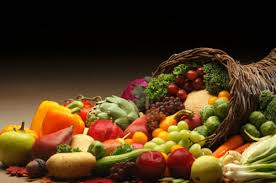No, this is about *why* agriculture matters here.
 |
| The hope |
If you are a fan of eating daily, it will give you serious pause to consider the fact that over 95% of the food(s) consumed here in Alaska, are freighted in. If it doesn't, it should. This in spite of the BAC, and the Division of Agriculture, and the farming boondoggles of the past (Pt MacKenzie, Delta grain, the two dairy fiascoes, the seafood facility that is now Changepoint in Anchorage, and others). In spite of the land programs, the trusts that hold title, in spite of the explosive growth of local producers, etc.
 |
| The reality |
Only a tiny fraction of lands can even be held in private hands in one form or another. Around 99 percent of our land is federal, state, or native allotment. Add in the amount gobbled up by the university (a land grant college) and mental health trust, and it leaves slim pickings indeed for anyone else. With a state government who is dire need of cash to cover its bloated expenses, the very idea of promoting agriculture through inexpensive (or free) land lotteries or sales is preposterous.
Whether you are one in a succession of generational farmers/ranchers, or a cheechako who just wants to try to "grow something", you face the same challenges as everyone else: To persevere against adversity. The short growing season, generally poor and cold soils, assorted pests (diseases, insects, and wildlife), the high costs of land, of growing supplies, of equipment, of it all. Foods that are easily grown in the verdant soils of the L48, can be impossible, or impossibly hard to do here. Livestock production presents yet another set of unique and impossible conditions.....long cold winters that demand copious quantities of high quality forages and grains, if the end result desired is a physically mature animal. It is nearly an insurmountable obstacle in itself, just acquiring land to farm or ranch. But to raise those cattle and hogs (and sheep and goats, etc) requires land to actually be in production-while many acres sit fallow for a number of reasons.
Then there is the insurance issue. There is one single provider for the entire state, basically. You either conform to the underwriter's conditions, or not. No other options, and there has been no movement to correct this problem. Possible solutions might be creating a pool and then purchasing group policies, or addressing specific tort reforms in this state so the risks are lower, for example. Our market for insurance is tiny, compared to many states, and this is a handicap that cannot be overcome without a significant change.
There remain the financial challenges. While we have available the BAC, it is fraught with CBC members. Not being an FDIC entity, they do not need to adhere to "fair lending practices", and they don't. They will loan money to folks who have already gone bankrupt, or are in default, deny loans to people who they deem "unable" to farm according to their own yardstick of the moment, and by selecting only those who meet their ideals of industry, they hamstring agriculture overall. Commercial lending from banks is nearly impossible, due to the inherent risks of farming in general. If you intend on subdividing for profit, however, it is readily available.
The land banks are notoriously hard to work with. In this state, there are only a few entities which have lands in significant amounts: The University of Alaska (a land grant college), the Mental Health Trust, and the Farmland trust are the major landholders. In theory, the university and mental health organizations should divest themselves of assets in times of financial distress-which we are experiencing today. In practice, land is seldom available from either of these, and when they are, it is at market value (read: assessed as for residential lots in most cases) and thus, out of reach of most folks wanting to follow the ag path. The FarmLand Trust is a little different, but there again, matching the right parcel to the entrepreneur can be a tedious process, and not always successful.
There is an entrenched perception across nearly all platforms, that "agriculture" somehow only constitutes row crops, forages, and grains. If you have enough acreage with cattle, then you're somehow elevated into the "industry" category. This is a simple summation of a complicated set of circumstances and ideals. There is an emphasis on sheer physical size, over determination and production that is different, or outside the pastoral acres of that normalized conception. Breaking those perceptions is yet another challenge facing newcomers and those with new approaches and ideas about food production.
So it is no wonder Alaska is unable to feed itself, or even ten percent of the consumable foods imported into the state every year. The obstacles are, in all practical purposes, insurmountable and immutable. Once the inevitable occurs, there will be much wailing and gnashing of teeth, of course.
Over 700,000 hungry mouths will speak with one voice:
We hunger, feed us!
And the state, and tiny agriculture community will respond: We cannot.
And then the blame and the finger pointing will commence, because we humans are a nasty species when faced with real, lasting adversity. We'll want to blame someone, anyone, for the failures of Alaska Ag. We'll expect and demand someone to rescue us, because that is what Americans do-we rescue the world, don't we? Yet the collective will not see the possibility, the certainty of long term disaster sure to come, and will not help themselves. They surely will not aid in remedying the shortcomings of our "agricultural system" here in Alaska...because they give it no thought. The grocery store shelves are full to overflowing, and excesses are tossed away without remorse. In fact, even the food banks find slim pickings these days, as grocers are litigated into disposing of their surplus in landfills, instead of the hungry.
If you've never been truly hungry, you don't think about the scarcity that faces humanity across the globe, or here at home. America might be the bread basket of the world (to borrow a famous snippet), but the farming acreage of Alaska is infinitesimal, comparatively.
And this is why Ag matters.